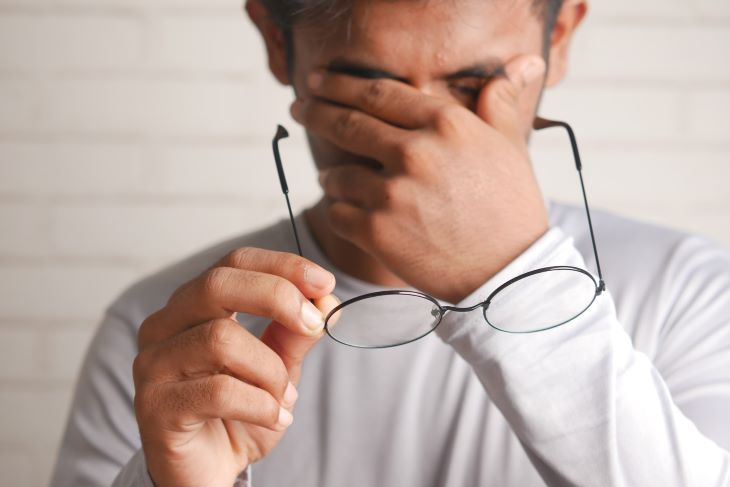Since its creation, Valium has been a popular substance – recreationally and for treating anxiety and/or sleeping problems.
According to the latest statistics, in England alone, 1.4 million adults have been prescribed a benzodiazepine – such as Valium – in the past year.
In 2018, there were a recorded 420 deaths related to Valium.
Since 2020, there has been a 6% increase in treatment entrants for benzodiazepines. (1)
For more information about benzodiazepine statistics in the UK, please follow this link.
This article aims to discuss how long Valium stays in a person’s system.
It will also cover what Valium is, what it is used for, what its effects are, and how to recognise Valium Addiction.
What Is Valium and What is it Used for?

Valium, also known as diazepam, is a benzodiazepine.
It is used, medically, to treat several health issues, such as:
- Seizures
- Insomnia
- Restlessness
- Muscle spasms
- Anxiety
- Stress
- Alcohol withdrawal
- Restless leg syndrome
Valium has a sedating effect on the brain and body. Valium does this by preventing the brain from firing neurons.
Valium helps with the efficiency of GABA – an inhibitory neurotransmitter that can slow down the brain by blocking certain signals to the central nervous system.
This then leads to the person feeling sedated and switched off.
Because of this, in some cases, Valium is also used for medical procedures, such as surgery.
Valium also remains a popular substance for recreational use.
People use Valium as a downer – that is, as a drug to help them relax and space out.
Unfortunately, the recreational use of Valium can lead to Valium addiction.
This has been increasingly on the rise in the past several years. (2)
How is Valium Classified and is it Illegal?

Valium, as mentioned, is a benzodiazepine – it is neither a narcotic nor an opioid.
This means that, with a prescription, the possession of a benzodiazepine is not illegal.
Valium is considered, however, a Class C drug. If people are caught in possession, without a prescription, or caught selling it, they could face criminal charges.
In addition, like most substances, engaging in certain activities whilst under the influence of Valium is illegal.
An example of this is driving whilst on Valium. (3)
How do you take Valium?

Usually, Valium comes in a pill form (2 to 60mg). The most common method of consumption is to take the pill orally.
However, some people have been known to use other methods.
An example of this is crushing the Valium into a powder and snorting it.
This increases how quickly Valium enters the blood and reaches the brain.
This is the same for people that crush and smoke Valium.
Finally, although more uncommon, some people inject Valium.
In a medical situation, such as before surgery, Valium can also be administered via injection. (4)
What are the Effects of Valium?

People will usually begin to feel the effects of Valium between 1 to 60 minutes are it enters the body.
This will depend on the dosage and how the Valium is administered. For example, in a hospital setting, intravenous diazepam can take 1 to 3 minutes.
Taking orally, such as the Valium prescribed to consumers, can take between 15 to 60 minutes. (5)
Commonly experienced side effects include:
- Tiredness
- Drowsiness
- Dizziness
- Blurred vision
- Relaxed
- Weak muscles
Some people might also experience some negative side effects, such as:
- Mood changes
- Memory loss
- Agitation
- Hallucinations
- Difficulty walking
- Difficulty talking
- Tremors
- Difficulty urinating
How Long Does Valium Stay in Your System?

Valium’s half-life is 48 hours; this refers to how long it takes for half the dose to leave a person’s body.
In most cases, Valium peaks in the bloodstream between 1 to 2 hours.
The effect on the brain can last a lot longer, though – usually between 4 to 6 hours.
This will depend upon the dose that a person takes, however – larger doses mean that Valium might stay in a person’s system for longer.
Valium also stays in different bodily systems for different durations.
Valium is usually detectable in a person’s urine for up to 6 weeks.
In a person’s blood, Valium is detachable between 6 to 48 hours after consumption.
Valium is detectable in a person’s hair for up to 90 days and is detectable in a person’s saliva for up to 10 days. (6)
Some factors contribute to how long Valium stays in a person’s system.
For example, these might include:
- Age – older people have a slower metabolism which means that Valium will take longer to leave their system
- Body fat – Valium takes longer to leave the system for people with a high body fat percentage
- Liver function – the liver is responsible for metabolism, therefore, people with liver dysfunction will take longer to eliminate Valium from their system
Is It Dangerous to Take Valium?

Generally speaking, taking Valium is not dangerous, as long as it is deemed by medical professionals as necessary.
It is also important that people do not exceed their recommended dose.
Excessive use of Valium, or taking Valium regularly as a recreational drug, can have some serious, negative health consequences and risk of overdose.
This might include:
- Nausea
- Vomiting
- Memory loss
- Loss of coordination
- Chronic fatigue
- Drowsiness
- Depression
- Irregular breathing
- Anxiety
- Paranoia
If a person experiences any of these symptoms, they should speak with a medical professional, such as a GP. (7)
Signs and Symptoms of Valium Addiction

People that use Valium regularly also run the risk of developing an addiction.
This might lead people to ask: how do I know if I have developed an addiction to Valium?
The most evident sign is withdrawal. This happens when both the body and the brain have become used to a substance and need it to function.
Without it, both the body and brain will begin to crave it. Over a period, without it, the brain and body will begin to detox – this can lead to withdrawal symptoms. (8)
Common Valium withdrawal symptoms include:
- Anxiety
- Sweats
- Tremors
- Rapid heart rate
- Insomnia
- Nausea
- Vomiting
The Valium withdrawal process usually begins 24 hours after the final dose and lasts between 3 to 4 days.
Other signs of addiction can be more behavioural. For example:
- Becoming isolated
- Becoming anti-social
- No longer interested in hobbies and/or social activities
- Craving Valium
- Building a tolerance – needing more of it to gain the desired effect
- Engaging in risk-taking behaviours
- Becoming financially unstable
- No taking care of personal hygiene
Treatment for Valium Addiction

For those suffering from Valium addiction, there are many great treatment options in the UK, such as:
- Inpatient (residential) treatment: this usually involves staying overnight at a facility for the duration of treatment. Unfortunately, this can be expensive. In the UK, most residential treatment costs between £300 to £500 per day.
- Outpatient treatment: this does not require the person to stay at a facility. Instead, people will attend weekly sessions at a GP clinic or local hospital. This can sometimes be accessed for free via local services or the NHS.
- Local services: The UK is home to many free drug organisations that offer drug support, therapy, help accessing treatment, and rehab aftercare. For more information about local services in the UK, please follow the link
- Counselling and therapy
- SMART Recovery
- Narcotics Anonymous (NA)
Therapy for Valium Addiction

A great option for dealing with Valium dependency is therapy. There are many great therapy types available, such as:
Of these, 1-to-1 therapy is probably the most common. This usually involves sitting with a trained professional and discussing issues related to drug addiction.
Conversations might centre on childhood trauma, family issues, or relationships.
The goal of 1-to-1 therapy is to uncover the root cause or why dependency might have occurred.
CBT looks at the relationship between thoughts and behaviours. Usually, addiction is predicted by some type of thought process.
CBT looks to uncover these thought processes and change negative thoughts into positive ones.
MI, as the name suggests, looks at a person’s motivation for using a substance.
The goal here is to change old motivations into new healthy ones, such as achieving and maintaining sobriety.
Finally, group therapy is one of the most tried and tested therapy types.
During group therapy, people will sit with others that are going through similar situations.
People will take turns sharing their experiences and struggles. (9)
References
(1) Cheng, Tianze, Dominique Marie Wallace, Benjamin Ponteri, and Mahir Tuli. “Valium without dependence? Individual GABAA receptor subtype contribution toward benzodiazepine addiction, tolerance, and therapeutic effects.” Neuropsychiatric disease and treatment (2018): 1351-1361.
(2) Powers, Holly. “The use of valium in alcohol withdrawal.” (2022).
(3) Borchardt, Jennifer S. The Brain’s Valium: Insights into Diazepam Binding Inhibitor Effects on Gaba-Mediated Inhibition. The University of Wisconsin-Madison, 2021.
(4) Ibid
(5) Ibid
(6) Cheng, Tianze, Dominique Marie Wallace, Benjamin Ponteri, and Mahir Tuli. “Valium without dependence? Individual GABAA receptor subtype contribution toward benzodiazepine addiction, tolerance, and therapeutic effects.” Neuropsychiatric disease and treatment (2018): 1351-1361.
(7) Ibid.
(8) Ibid.
(9) Carroll, Kathleen M., and Lisa S. Onken. “Behavioral therapies for drug abuse.” American Journal of Psychiatry 162, no. 8 (2005): 1452-1460.





